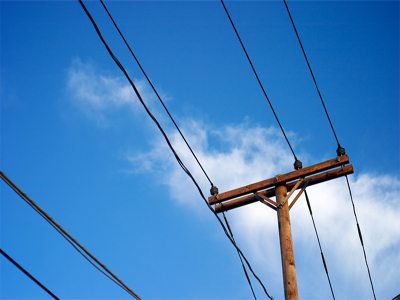A release from Australia’s power network lobby has suggested that the nation’s grid operators might finally be facing up to reality on the future shape of Australia’s electricity market.
In a statement released on Monday, the Energy Networks Association said it “strongly supported” changes to national electricity rules that would support the development of alternative options to manage peak demand – without building more poles and wires.
Energy Networks Association CEO John Bradley said the nation’s utilities supported a level playing field for “non-network” solutions like demand management, to ensure all options were on the table to provide efficient, safe and reliable services to customers.
This might sound like a no-brainer, but it’s a big change of tack for network operators who have – as Chris Dunstan put it in this article two weeks ago – since 2008, worked around strong regulatory incentives to build more and more infrastructure.
“The more poles, wires and substations they built, the bigger their ‘asset base’, and the bigger their profits,” Dunstan wrote. “It is no surprise, then, that in the past five years Australian networks have spent more than ever on infrastructure – hence why electricity prices have doubled between 2007 and 2014.”

As Dunstan also noted, however, a new scheme being considered by the Australian Energy Market Commission (AEMC) – which sets the rules for the power industry – could change all that, provided our “energy regulators are ready to face the future.”
The Demand Management Incentive Scheme Rule Change – first proposed by the AEMC in 2012 – would require the AER to give the network business incentives to help customers cut their electricity demand. Submissions on the proposal close on March 19.
But, according to the ENA boss John Bradley, this 2012 recommendation has already been “embraced” by electricity networks as “one of the final jigsaw pieces in a strong demand management framework.”
Bradley said networks were already in the process of evaluating the alternatives to building new network infrastructure through regulatory investment tests.
“(The networks) now release annual planning reports identifying the sections o f the network under pressure and potential opportunities for demand management,” said Bradley.
And while investment in poles and wires may remain the most efficient way of providing an energy service in some cases, he added, “opportunities to defer or avoid capital investment through demand management should be encouraged by electricity regulation if they provide better outcomes for customers.”
“The regulatory framework can be improved to support the efficient use of demand management alternatives which benefit the entire community.
“We have seen recent regulatory decisions rejecting significant demand management programs proposed by networks , so there is more work to be done.”
Indeed there is. As Dunstan pointed out, while the concept of demand management is not new in Australia it is still a relatively underdeveloped mechanism, compared to examples from around the world.
A mechanism that, according to research commissioned by the AEMC, could unlock consumer savings of between $A4 billion and $12 billion – or annual household bill reductions of $120-$500.
But if the rule change is not adopted, says Dunstan, and the AER does not provide meaningful incentives for demand management, networks will remain inclined “to continue their past practice of building infrastructure and maximising profits.”
Says Dunstan: “It will lock Australia into an outmoded, centralised model of electricity generation, at a time when technology and market trends all point towards more decentralised energy.”
It could also backfire on networks and gentailers, by causing more and more consumers to quit the grid, as solar plus storage packages become cheaper and more attractive.
“With the right framework there’s a great opportunity for future innovation in demand management to benefit electricity customers”, Bradley said.









